GrabCAD

Ventilation Duct
by GrabCAD
Last crawled date: 1 year, 12 months ago
Ducts are conduits or passages used in heating, ventilation, and air conditioning (HVAC) to deliver and remove air. The needed airflows include, for example, supply air, return air, and exhaust air.[1]Ducts commonly also deliver ventilation air as part of the supply air. As such, air ducts are one method of ensuring acceptable indoor air quality as well as thermal comfort.
Ducts can be made out of the following materials:
Galvanized steel
Galvanized mild steel is the standard and most common material used in fabricating ductwork because the zinc coating of this metal prevents rusting and avoids cost of painting. For insulation purposes, metal ducts are typically lined with faced fiberglass blankets (duct liner) or wrapped externally with fiberglass blankets (duct wrap). When called for, a double walled duct is used. This will usually have an inner perforated liner, then a 1–2" layer of fiberglass insulation contained inside an outer solid pipe.
Rectangular ductwork commonly is fabricated to suit by specialized metal shops. For ease of handling, it most often comes in 4' sections (or joints). Round duct is made using a continuous spiral forming machine which can make round duct in nearly any diameter when using the right forming die and to any length to suite, but the most common stock sizes range evenly from 4" to 24" with 6"-12" being most commonly used. Stock pipe is usually sold in 10' joints. There are also 5' joints of non-spiral type pipe available, which is commonly used in residential applications.
Aluminium
Aluminium ductwork is lightweight and quick to install. Also, custom or special shapes of ducts can be easily fabricated in the shop or on site.
The ductwork construction starts with the tracing of the duct outline onto the aluminium preinsulated panel. The parts are then typically cut at 45°, bent if required to obtain the different fittings (i.e. elbows, tapers) and finally assembled with glue. Aluminium tape is applied to all seams where the external surface of the aluminium foil has been cut. A variety of flanges are available to suit various installation requirements. All internal joints are sealed with sealant.
Aluminum is also used to make round spiral duct, but it is much less common than galvanized steel.
Polyurethane and phenolic insulation panels (pre-insulated air ducts)
Traditionally, air ductwork is made of sheet metal which was installed first and then lagged with insulation. Today, a sheet metal fabrication shop would commonly fabricate the galvanized steel duct and insulate with duct wrap prior to installation. However, ductwork manufactured from rigid insulation panels does not need any further insulation and can be installed in a single step. Both polyurethane and phenolic foam panels are manufactured with factory applied aluminium facings on both sides. The thickness of the aluminium foil can vary from 25 micrometres for indoor use to 200 micrometres for external use or for higher mechanical characteristics. There are various types of rigid polyurethane foam panels available, including a water formulated panel for which the foaming process is obtained through the use of water and CO2 instead of CFC, HCFC, HFC and HC gasses. Most manufacturers of rigid polyurethane or phenolic foam panels use pentane as foaming agent instead of the aforementioned gasses.
etc...
Ducts can be made out of the following materials:
Galvanized steel
Galvanized mild steel is the standard and most common material used in fabricating ductwork because the zinc coating of this metal prevents rusting and avoids cost of painting. For insulation purposes, metal ducts are typically lined with faced fiberglass blankets (duct liner) or wrapped externally with fiberglass blankets (duct wrap). When called for, a double walled duct is used. This will usually have an inner perforated liner, then a 1–2" layer of fiberglass insulation contained inside an outer solid pipe.
Rectangular ductwork commonly is fabricated to suit by specialized metal shops. For ease of handling, it most often comes in 4' sections (or joints). Round duct is made using a continuous spiral forming machine which can make round duct in nearly any diameter when using the right forming die and to any length to suite, but the most common stock sizes range evenly from 4" to 24" with 6"-12" being most commonly used. Stock pipe is usually sold in 10' joints. There are also 5' joints of non-spiral type pipe available, which is commonly used in residential applications.
Aluminium
Aluminium ductwork is lightweight and quick to install. Also, custom or special shapes of ducts can be easily fabricated in the shop or on site.
The ductwork construction starts with the tracing of the duct outline onto the aluminium preinsulated panel. The parts are then typically cut at 45°, bent if required to obtain the different fittings (i.e. elbows, tapers) and finally assembled with glue. Aluminium tape is applied to all seams where the external surface of the aluminium foil has been cut. A variety of flanges are available to suit various installation requirements. All internal joints are sealed with sealant.
Aluminum is also used to make round spiral duct, but it is much less common than galvanized steel.
Polyurethane and phenolic insulation panels (pre-insulated air ducts)
Traditionally, air ductwork is made of sheet metal which was installed first and then lagged with insulation. Today, a sheet metal fabrication shop would commonly fabricate the galvanized steel duct and insulate with duct wrap prior to installation. However, ductwork manufactured from rigid insulation panels does not need any further insulation and can be installed in a single step. Both polyurethane and phenolic foam panels are manufactured with factory applied aluminium facings on both sides. The thickness of the aluminium foil can vary from 25 micrometres for indoor use to 200 micrometres for external use or for higher mechanical characteristics. There are various types of rigid polyurethane foam panels available, including a water formulated panel for which the foaming process is obtained through the use of water and CO2 instead of CFC, HCFC, HFC and HC gasses. Most manufacturers of rigid polyurethane or phenolic foam panels use pentane as foaming agent instead of the aforementioned gasses.
etc...
Similar models
3dwarehouse
free

45 joint for round metal 48 inch ductwork
...3dwarehouse
joint for connecting two round 48 inch ductwork tubes at a 45 angle. #air #construction #duct #ductwork #hvac #joint
3dwarehouse
free

45 joint for round metal 24 inch ductwork
...3dwarehouse
joint for connecting two round 24 inch ductwork tubes at a 45 angle. #air #construction #duct #ductwork #hvac #joint
3dwarehouse
free

45 joint for round metal 12 inch ductwork
...3dwarehouse
joint for connecting two round 12 inch ductwork tubes at a 45 angle. #air #construction #duct #ductwork #hvac #joint
3dwarehouse
free

45 joint for round metal 18 inch ductwork
...3dwarehouse
joint for connecting two round 18 inch ductwork tubes at a 45 angle. #air #construction #duct #ductwork #hvac #joint
3dwarehouse
free

45 joint for round metal 9 inch ductwork
...
3dwarehouse
joint for connecting two round 9 inch ductwork tubes at a 45 angle. #air #construction #duct #ductwork #hvac #joint
3dwarehouse
free

45 joint for round metal 36 inch ductwork
...3dwarehouse
joint for connecting two round 36 inch ductwork tubes at a 45 angle. #air #construction #duct #ductwork #hvac #joint
3dwarehouse
free

90 elbow joint for round metal 9 inch ductwork
...
3dwarehouse
joint for connecting two round 9 inch ductwork tubes at a 90 angle. #air #construction #duct #ductwork #hvac #joint
3dwarehouse
free

90 elbow joint for round metal 24 inch ductwork
...3dwarehouse
joint for connecting two round 24 inch ductwork tubes at a 90 angle. #air #construction #duct #ductwork #hvac #joint
3dwarehouse
free

90 elbow joint for round metal 18 inch ductwork
...3dwarehouse
joint for connecting two round 18 inch ductwork tubes at a 90 angle. #air #construction #duct #ductwork #hvac #joint
3dwarehouse
free

90 elbow joint for round metal 12 inch ductwork
...3dwarehouse
joint for connecting two round 12 inch ductwork tubes at a 90 angle. #air #construction #duct #ductwork #hvac #joint
Ventilation
3d_export
$5

ventilation
...ventilation
3dexport
5 types of ventilation
3d_export
$10

ventilation
...ventilation
3dexport
5 types of ventilation and engineer communication
3d_ocean
$5

Ventilator
...pliance blower desk detailed electric electro fan hvac oscillating realistic table ventilator
high poly, very detailed ventilator
3d_export
$25

ventilator
...ventilator
3dexport
turbosquid
$20

Ventilator
... free 3d model ventilator for download as blend, fbx, and obj on turbosquid: 3d models for games, architecture, videos. (1612370)
turbosquid
$43

Ventilator
... available on turbo squid, the world's leading provider of digital 3d models for visualization, films, television, and games.
turbosquid
$25

ventilation
... available on turbo squid, the world's leading provider of digital 3d models for visualization, films, television, and games.
turbosquid
$4
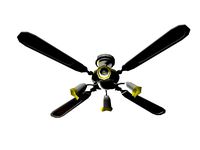
Ventilator
... available on turbo squid, the world's leading provider of digital 3d models for visualization, films, television, and games.
3d_export
$5

ventilation and columns
...ventilation and columns
3dexport
ventilation and columns.<br>3 types of ventilation<br>2 types of columns
archive3d
free
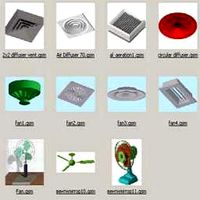
Ventilators 3D Model
...ventilators 3d model archive3d ventilation ventilation equipment...
Duct
turbosquid
$19

Duct Set
...d
royalty free 3d model duct set for download as max and fbx on turbosquid: 3d models for games, architecture, videos. (1145038)
turbosquid
$10

Duct Tape
...id
royalty free 3d model duct tape for download as ma and ma on turbosquid: 3d models for games, architecture, videos. (1580351)
turbosquid
free

Duct Tape
...
free 3d model duct tape for download as obj, fbx, and blend on turbosquid: 3d models for games, architecture, videos. (1486518)
3d_ocean
$7
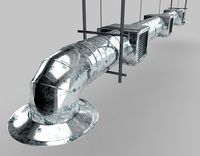
Air-duct
... ventilation
high quality industrial air duct ventilation model. created in cinema 4d but comes in various other formats as well.
turbosquid
$20
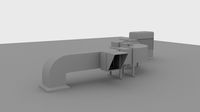
Air ducts
...lty free 3d model air ducts for download as max, obj, and fbx on turbosquid: 3d models for games, architecture, videos. (1262476)
3d_export
$10

Supply air duct
...supply air duct
3dexport
supply air duct with two axial fans and hangers
turbosquid
$2

Duct Tape
...e 3d model duct tape for download as obj, fbx, blend, and dae on turbosquid: 3d models for games, architecture, videos. (1473972)
turbosquid
free
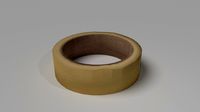
Duct Tape
... available on turbo squid, the world's leading provider of digital 3d models for visualization, films, television, and games.
3d_ocean
$3
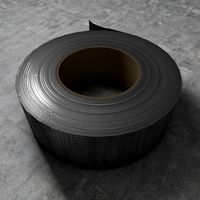
Duct tape
...polys. includes: cinema 4d project. model in 3 formats (obj, fbx, 3ds). 6 .tga texture maps (albedo, ambient occlusion, diffus...
turbosquid
$40
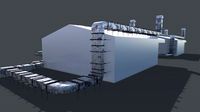
Ventilation Duct PACK
...tion duct pack for download as ma, obj, fbx, and unitypackage on turbosquid: 3d models for games, architecture, videos. (1287068)
